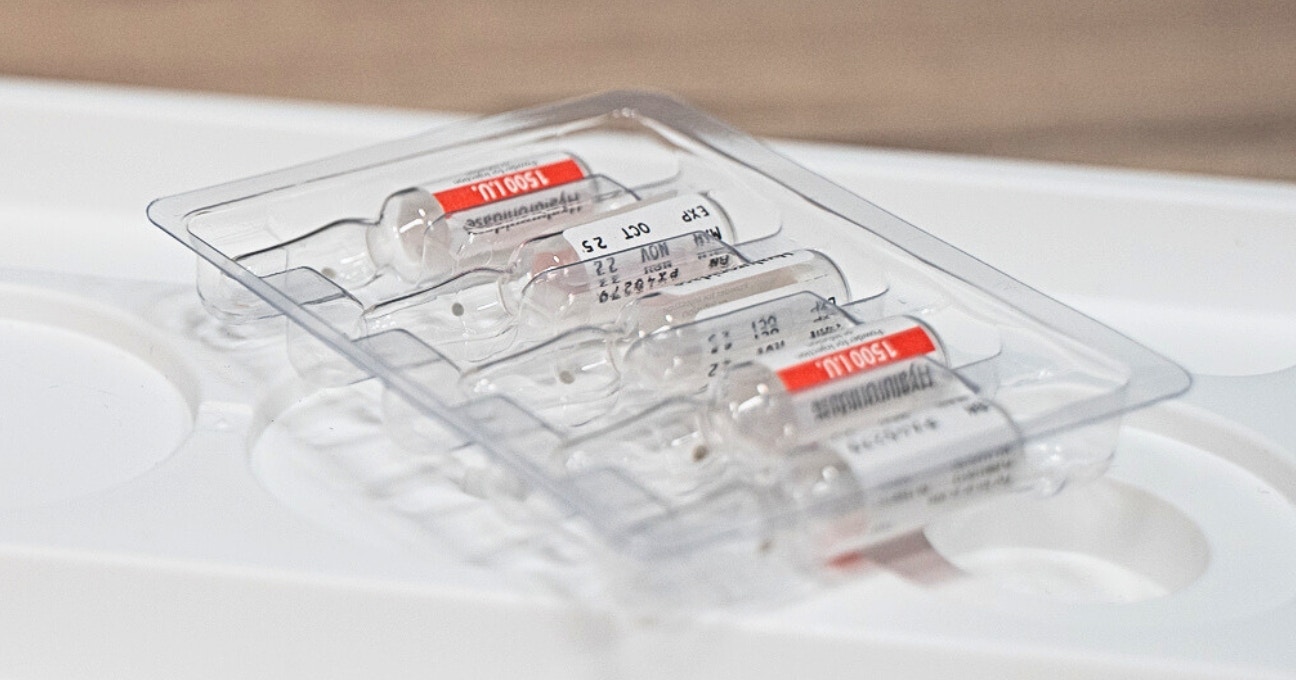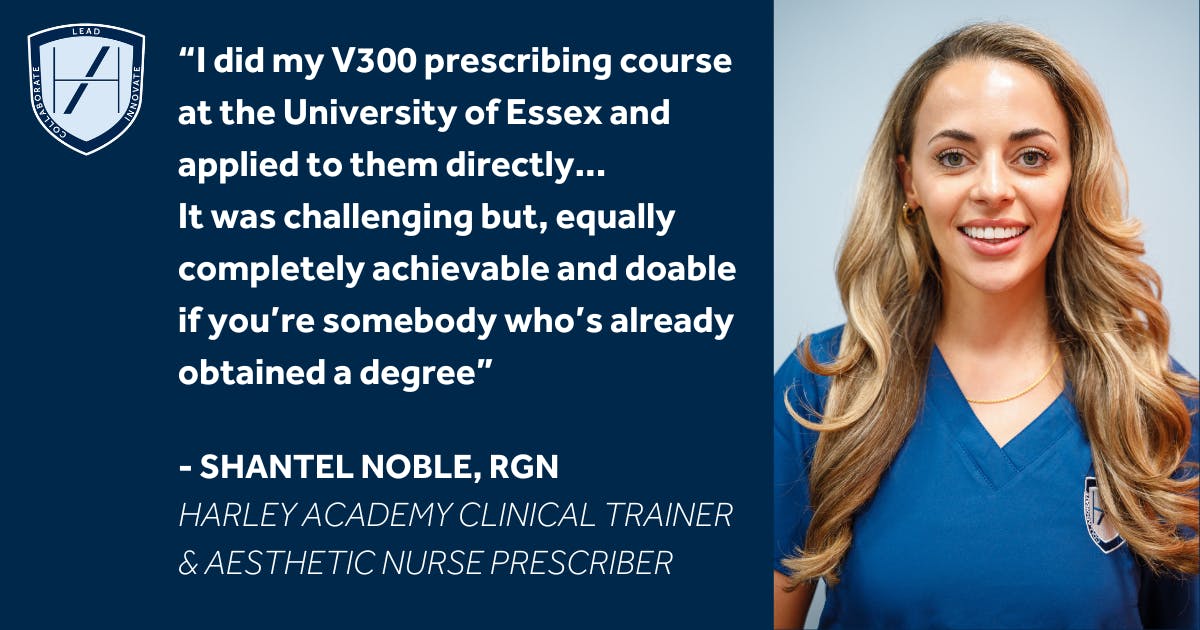Should Aesthetics Practitioners Be Prescribers?

Do aesthetics practitioners have to be prescribers to practise in the UK? No. But should they be..? It may be controversial but we believe all aesthetics practitioners should be prescribers.
Here we’ve extracted part of a pertinent discussion between leading aesthetics journalist, Alice Hart-Davis and our founder, Dr Tristan Mehta.
Let’s delve into Dr Tristan’s thoughts on why all aesthetics practitioners should be able to prescribe independently, and what the current prescribing landscape looks like…
Why should aesthetics practitioners be prescribers?
During an Instagram Live on aesthetics regulation, the subject of how to choose an aesthetics practitioner came up. Red flags and how to ensure your injector has completed sufficient, accredited medical aesthetics training, were discussed.
Reading a question from the chat, Alice asked Dr Tristan if there was a particular aesthetics qualification patients could look for.
Dr Tristan: “There's currently not a mandatory qualification. I think, at the very baseline, we need to be looking for a healthcare professional. I would also recommend that that professional has the ability to prescribe.”
He continued, “The reason is because they can manage anything that they oversee. So, if there's a complication or if there's something to treat, they can prescribe.
“Then, if you want a specific benchmark for actual quality of injecting and safety of injecting, you can look for a, for example, Level 7 Diploma in injectables.
“There are two fundamental ethical requirements from my perspective. You have to be accountable to a professional regulator, which means that you sign up to a code of conduct. Secondly, you need to be able to manage any complications that you cause independently.”
Why aesthetics practitioners must be able to prescribe independently
Alice noted that aesthetics practitioners also being prescribers meant they’d be better able to manage complications. She gave the example of a “vascular occlusion” and of prescribers being able to have hyaluronidase to hand to dissolve, if necessary.
Dr Tristan responded, “People, I think, over-exaggerate that risk. I think that things like a straightforward vascular occlusion, you do have time. Even if it's not caught in the clinic.
“The bigger thing and the thing we see in our training clinics is that things like delayed onset inflammatory reactions and abscesses, nodules, those are troublesome and require a range of different prescription drugs and specialist management. And this is much more common than a vascular event.
“If you ask our medical team, those are the main reasons to be a prescriber, it's because you can have all kinds of things that can happen once we've injected a gel under the skin and we have to be able to manage those.
“This is the fundamental reason why we are in a medical specialty.”

Why it makes sense to be able to prescribe independently
We caught up with Dr Tristan to hear more about why he believes all aesthetics practitioners should be prescribers.
“There are a number of compelling reasons for being able to prescribe independently,” he advises.
“The first is clearly patient safety. If you’re able to prescribe, you’ll be able to manage any complications more efficiently. Whether this is a nodule or vascular event - you’ll be able to move quickly without relying on a third party for your prescriptions.”
“This leads into the second point which is that being a prescriber allows you more freedom to run your own practice. It also frees you of the financial commitment of working with a prescriber.
“Not only does this incur prescribing fees but you need to run designated prescribing clinics - usually days when you run consultation appointments where patients meet face-to-face with you and your prescriber. These clock-up additional outgoings in terms of utilities, clinic hire fees and loss of earnings if you’re not providing actual treatments on these days.”
He counsels, “We may see the rules regarding prescribing revisited as part of the current aesthetics regulation proposals and licensing scheme. But even outside of this, it makes perfect sense from a patient safety and commercial perspective to ensure you are as independent a practitioner as possible.”
Examples of prescription-only medications used in aesthetics
There are a number of prescription-only medications (POMs) used in everyday aesthetic practice.
These include:
- Botulinum toxin type A (regardless of the brand, eg. Botox, Dypsport, etc.)
- Hyaluronidase
- Certain lidocaine products used in pain management
- Antibiotics, antivirals and steroids.

Who can become a prescriber in aesthetic medicine?
So which healthcare professionals can become a prescribing aesthetics practitioner?
These are the current rules, considering the medical professions of our trainees:
- Doctors and dentists can prescribe
- Nurses cannot prescribe until they have obtained a V300 prescriber qualification
- Clinical pharmacists can prescribe
- Dental therapists cannot prescribe or become prescribers.
For those who can prescribe, they must do so within their scope of competency.
How non-prescribing aesthetics practitioners obtain POMs
Non-prescribers must currently work with a prescribing aesthetics practitioner or use a prescribing service to obtain prescriptions for their patients.
For prescribers considering working with a non-prescriber, it’s important to understand your responsibilities before agreeing.
It’s mandatory for anyone working with a prescriber to ensure their patients see this person for face-to-face consultations every time they require a new prescription. Video calls and other forms of remote prescribing are prohibited.

How can an aesthetic nurse become a prescriber?
In the UK a V300 prescribing course should be completed in order to obtain the necessary qualification to prescribe.
These courses are generally offered by universities, many of which now require candidates to hold a Level 7 Diploma in Botox & Dermal Fillers as part of their entry criteria.
Thanks to Harley Academy’s relationship with the University of the West of England at Bristol, our Level 7 graduates have access to their V300 course. This is obviously assuming all other entry requirements are met.
Shantel Noble, a cosmetic nurse prescriber and clinical trainer, explained her experience of becoming a prescriber and taking the V300. She did so after completing her Fast Track Level 7 Diploma and counsels against trying to undertake both courses at once!
What are your thoughts on who should be able to prescribe? Let us know over on the Harley Academy Instagram account @Harley_Academy.
All information correct at the time of publication
Download our full prospectus
Browse all our injectables, dermal fillers and cosmetic dermatology courses in one document
By submitting this form, you agree to receive marketing about our products, events, promotions and exclusive content. Consent is not a condition of purchase, and no purchase is necessary. Message frequency varies. View our Privacy Policy and Terms & Conditions
Attend our FREE open evening
If you're not sure which course is right for you, let us help
Join us online or in-person at our free open evening to learn more
Our Partners












STAY INFORMED
Sign up to receive industry news, careers advice, special offers and information on Harley Academy courses and services

